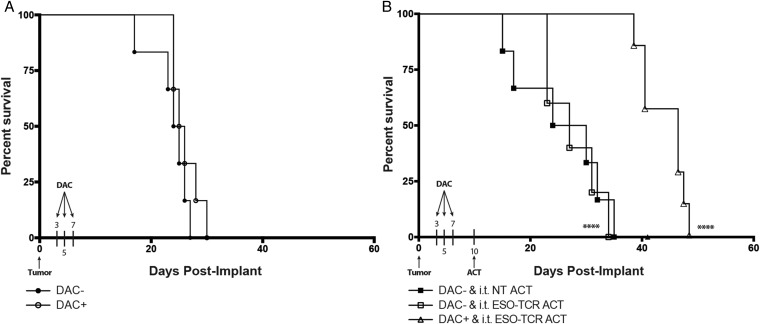Fig. 5.
Extended survival of glioma-bearing mice that received DAC treatment followed by i.t. ACT of NY-ESO-1–specific T cells. (A) Groups of NSG mice (n = 6/group) were implanted with 2.5 × 105 U-251MG glioma cells into the brain. Beginning at day 3 post tumor implant, the animals were treated with 10 mg/kg DAC i.p. every other day for a total of 3 doses (DAC+) or left untreated (DAC−). No significant difference in median survival was noted (DAC−, 24.5 d; DAC+, 25.5 d). (B) NSG mice (n = 6/group) were intracranially implanted with 2.5 × 105 U-251MG glioma cells. Two groups received i.t. ACT of NY-ESO-1 TCR engineered T cells (ESO-TCR ACT) or nontransduced T cells (NT ACT) (106 cells/2 μL) on day 10 in the absence of DAC treatment. One group received NY-ESO-1 TCR engineered T cells (ESO-TCR ACT) (106 cells/2 μL) on day 10 following DAC treatment regimen as described before. Significant differences were noted between DAC+ and i.t. ESO-TCR ACT and DAC− and i.t. NT ACT groups (****P < .0001, log-rank survival test). Data shown are representative of one experiment repeated 3 times with similar findings.

